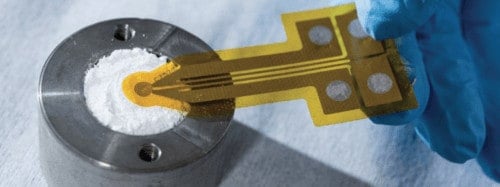Baratunde Cola would like to put sand into your computer. Not beach sand, but silicon dioxide nanoparticles coated with a high dielectric constant polymer to inexpensively provide improved cooling for increasingly power-hungry electronic devices.
The silicon dioxide doesn’t do the cooling itself. Instead, the unique surface properties of the coated nanoscale material conduct the heat at potentially higher efficiency than existing heat sink materials. The theoretical physics behind the phenomenon is complicated, involving nanoscale electromagnetic effects created on the surface of the tiny silicon dioxide particles acting together.
The bottom line could be a potentially new class of high-thermal conductivity materials useful for heat dissipation from power electronics, LEDs, and other applications with high-heat fluxes.
“We have shown for the first time that you can take a packed nanoparticle bed that would typically act as an insulator, and by causing light to couple strongly into the material by engineering a high dielectric constant medium like water or ethylene glycol at the surfaces, you can turn the nanoparticle bed into a conductor,” said Cola, an associate professor in Georgia Tech’s George W. Woodruff School of Mechanical Engineering. “Using the collective surface electromagnetic effect of the nanoparticles, the thermal conductivity can increase 20-fold, allowing it to dissipate heat.”
The research, which involved both theory and experiment, was reported in the journal Materials Horizons. The work was supported by the Air Force Research Laboratory and the U.S. Air Force.

